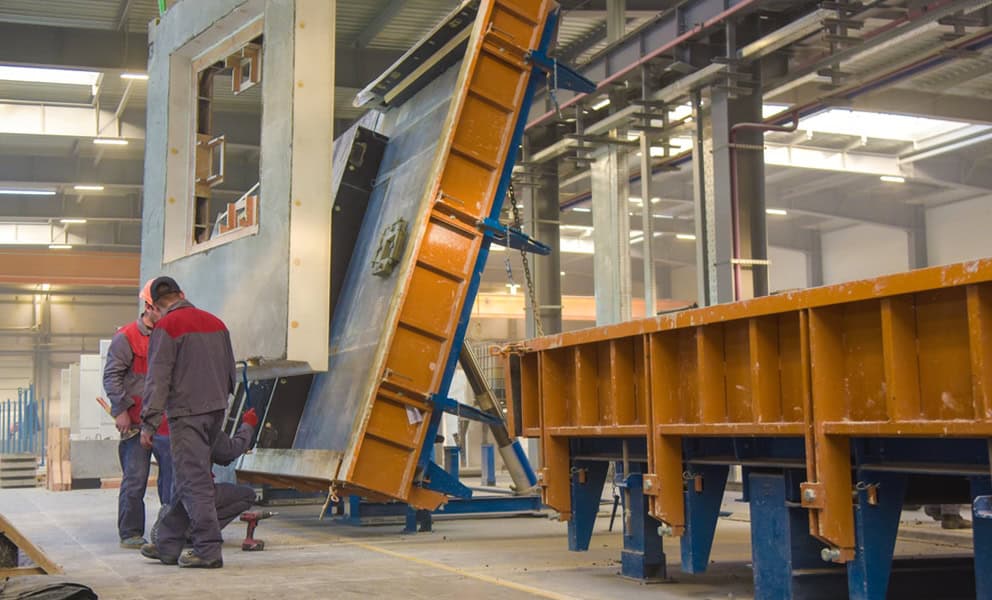How To Create a Robust Emergency Response Plan for Your Construction Project
It is essential to create a robust emergency response plan for your construction project because despite our best efforts, construction suffers from the highest accident, injury, and fatality rates of all industries, both in the UK and worldwide. For most site managers, this means the question is not “if” an accident will happen, but “when”.
What is an Emergency Response Plan?
An emergency response plan for your construction project identifies key risks associated with the project, defines the core responsibility holders and their duties, and any procedures or protocols that should be followed, both to reduce the likelihood or severity of an accident occurring, and what to do if and when they do occur.
Your project emergency response plan should be drawn up with collaboration from key stakeholders and personnel who will be affected by or have duties within the plan.
You should also consult with a health and safety specialist, as they will be able to identify legal duties that should be borne in mind or will affect the provisions within your emergency response plan.
They will also be able to identify risks which you may not have thought of or noticed and advise suitable controls to ideally eliminate or reduce the severity or likelihood of the risk.
Contents of an Emergency Response Plan for Your Construction Project
Your emergency response plan will comprise of many sections, all helping to produce a robust document that can be used as both a preventative measure to avoid accidents, and a reference document in the event of an accident.
As it may be used in a high-pressure circumstance, it’s vital that it is laid out in an easy-to-read format, with clear section titles and unambiguous content.
Here are the core sections that you should include in your construction project emergency response plan.
Risk Assessment
You should include a general risk assessment of common and significant risks associated with your construction project.
Consider the site and environment, the types and number of people working on the site, and activities being carried out.
You don’t need to go into minute detail with this risk assessment, however, you do need to identify the greatest risks to your site personnel - then identify ways to eliminate the risk, reduce it, separate your workers from the risk, or control it.
Measures such as PPE and management controls should be your last resort; you should also aim to introduce collective measures that protect many personnel rather than individuals.
Your risk assessment controls will help form the roles and responsibilities later in the emergency response plan for your construction project, for example, in the event of a chemical spillage, you will need to define who will coordinate and carry out any spill containment efforts, close down runoff sluices or valves, dispose of the hazardous material, coordinate an evacuation, make the area safe, or inform the local authority.
Emergency Response Team
In this section, you should identify key personnel and their respective duties.
It is best to refer to personnel using their role or title rather than personal name; this is less ambiguous and means the plan will require less frequent updating or review when there is a personnel change.
The easiest way to do this is in a table format, for example:
| Personnel | ||||
| Activity | Project Manager | Site Manager | Operations Manager | Health and Safety Manager |
| General oversight |
X |
X |
||
| Emergency Response Team Coordination |
X |
|||
| Safety inspections |
X |
X |
||
| Emergency Service Liaison |
X |
|||
Within this section you should also identify designated emergency response coordinators, who will have specific roles within emergency situations, for example coordinating evacuation or liaising with emergency services.
First aiders and fire marshals should also be identified within this section, however, contrary to the general roles table, these may be identified by name as well as job title.
Remember that these people will need appropriate training in order to carry out their assigned duties.
It is also good practice to identify personnel or employees who will deal with public relations and the media, in order to control the flow of information and therefore preserve company reputation and prevent sensitive information from being made public.
Communication Plans
Define in this section how information will be disseminated throughout the site personnel and stakeholders.
Information should include the emergency response plan itself, as well as any general communiques or memorandums which personnel should be aware of in order to work safely, both day-to-day and in the event of an emergency.
This section will include details regarding communication internally as well as with third parties and the emergency services, as well as escalation procedures to ensure information is provided up the company hierarchy (for example, directors and senior management) to ensure timely and accurate updates.
Contact Information
This is a straightforward section yet is just as crucial as the others.
You need to provide contact telephone numbers for all stakeholders and duty holders, as well as numbers for third parties such as hospitals, fire stations, and police stations, your insurers, legal advisors, health and safety advisors, and also useful contacts such as local taxi firms.
You should also detail contact numbers for your local environmental authorities, for example Environmental Agency or SEPA.
Evacuation Procedures
Describe the essential information that personnel need to know in order to evacuate the site safely, for example the sound of any alarms, and colour and placement of beacons.
Provide instructions on dos and don’ts regarding safe evacuations.
Include maps of the site, showing fire exits, evacuation routes, and the muster point; emergency equipment such as fire extinguishers, hydrants, first aid kits and defibrillators should also be demarcated on your map.
It’s also good practice to include maps showing locations of high and low voltage transformers and kill switches, potential fuels such as diesel pumps and gas storage, water courses, culverts and sluices, and drainage/runoff flow, and main vehicular access routes throughout the site.
Information regarding safe shut down of equipment and mobile plant should also be included to ensure there is no conflict or risk to personnel participating in the evacuation.
Communication
Once you have formulated your emergency response plan for your construction project, you’ll need to ensure that it is communicated to everyone on site, and those who have duties under the plan.
You should get signed confirmation that personnel have read, understand, and agree to abide by the emergency response plan for your construction project.
Modern HSMSs may incorporate a digital document sign off, however, these will need to have advanced or qualified levels of authentication in order to be robust enough to be used as a legal document.
High Responsibility
As you can see, it is essential that your emergency response plan contains comprehensive, accurate and relevant information, and that it is laid out in a way that is understandable and unambiguous.
Doing this will help avoid accidents, as well as potentially reduce the severity of any accident or incident should they occur, by means of a proper and timely response.
Naturally formulating your plans is a high responsibility task.
If creating a robust emergency response plan feels daunting, or more than you can handle - give Majestic a call.
We’ll happily guide you through creating an emergency response plan for your construction project.

With over 30 years’ experience in the construction industry, Lee offers more than just a helping hand to keep your project on track. Majestic Site Management also specialises in site compliance, and health and safety, with a long-list of credentials to prove it. Connect with Lee on LinkedIn >>


